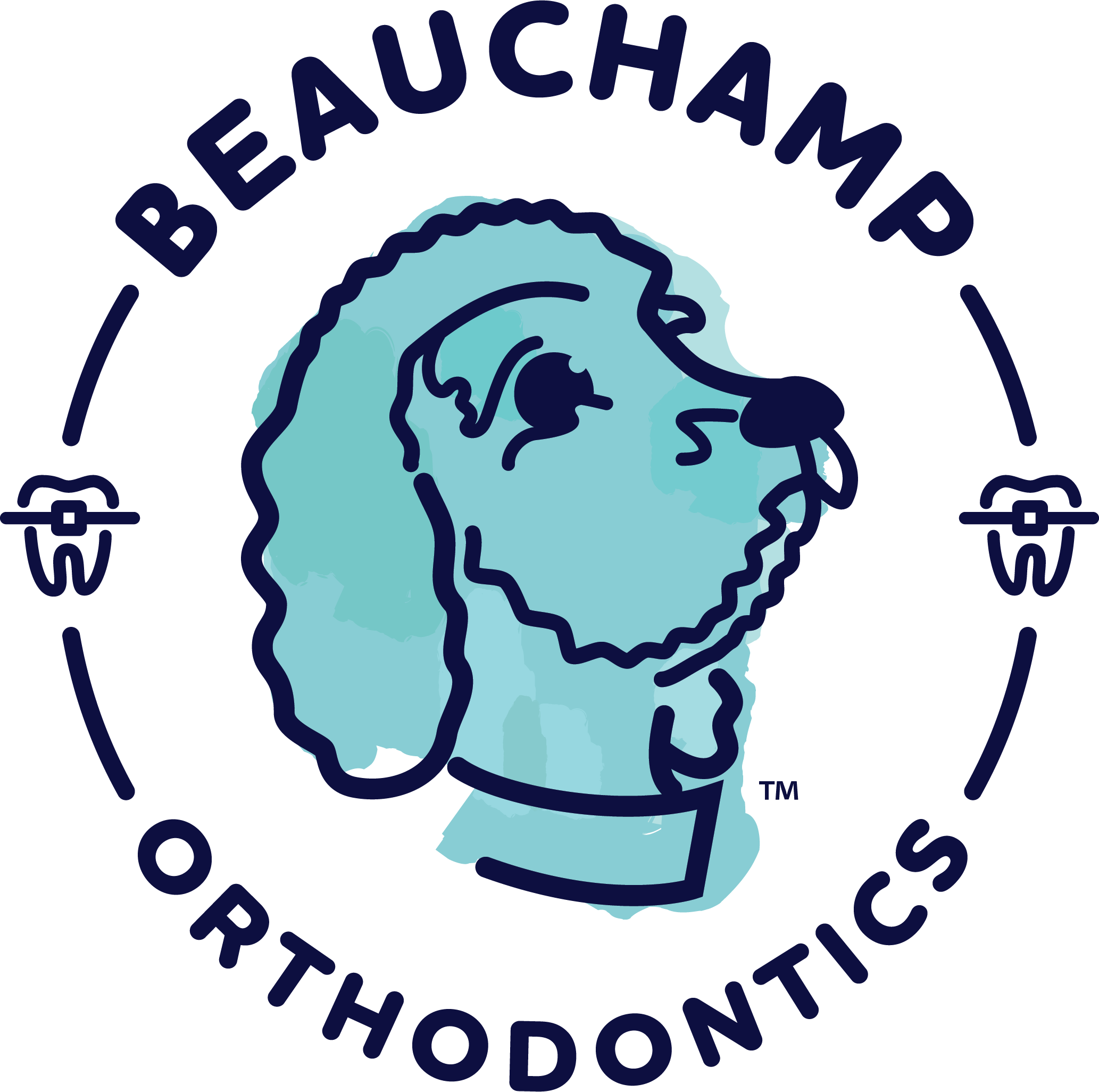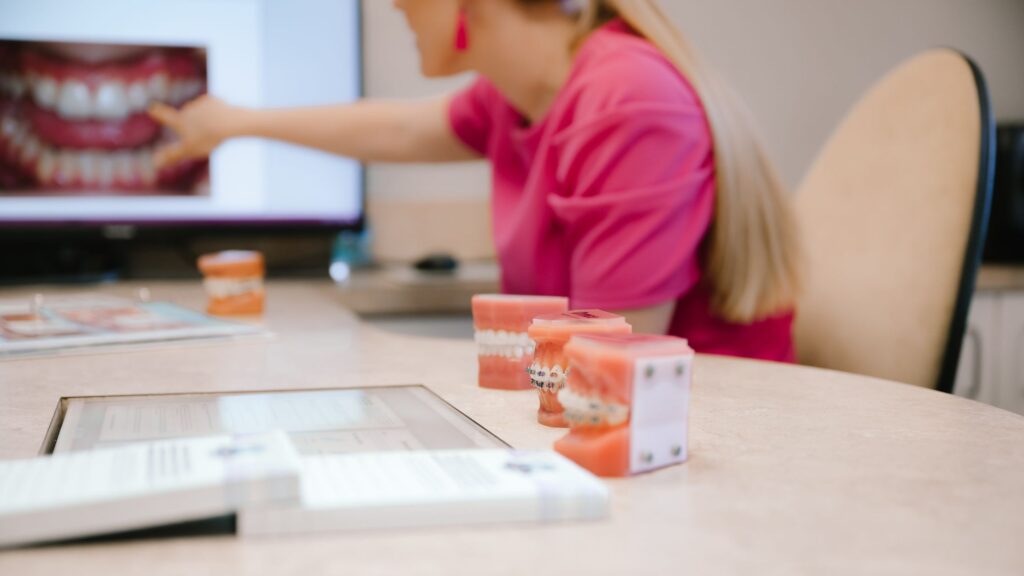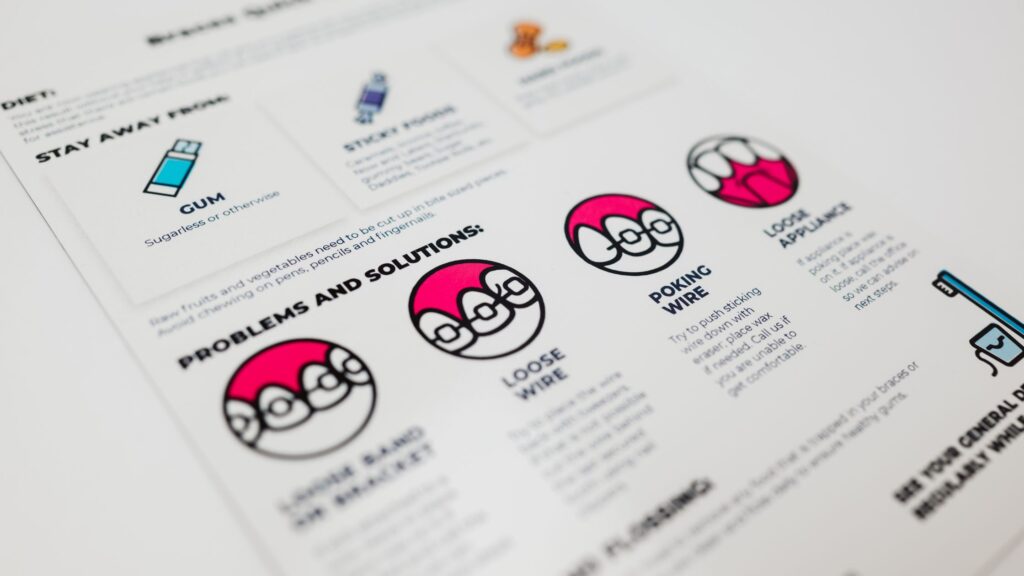Orthodontics is full of interesting vocabulary!
You don’t have to take notes and there’s no test at the end, but many people feel better when they know a little bit about what to expect from their orthodontic visit. Plus, if you’re bringing the kids for their first orthodontic treatment in Port Orange, it can be reassuring to know more so you can explain it to them.
Early orthodontic treatment has the potential to make oral health much easier for kids as they grow up. Sometimes, even children who still have their baby teeth may need a little bit of help from an orthodontist. That helps ensure their adult teeth grow straight and strong.
The ultimate goal of all orthodontic treatment is straight, healthy, and aligned teeth. That’s valuable because it protects teeth from wear and tear that might develop when they’re misaligned and bite force isn’t distributed evenly throughout the mouth. Plus, straight teeth are much easier to keep clean and protect in the long run.
Orthodontic treatment works hand in hand with dentistry for a beautiful smile!
Let’s take a closer look at some of the many terms you might encounter at a Port Orange orthodontist:
1. Aligners
Aligners are clear plastic appliances used to straighten teeth. They are a popular alternative to metal braces. Invisalign® changed the world of aligners back in 1998 when it was approved by the FDA. It’s still the option chosen by most adults and teens, but it isn’t available for young patients without all or most of their permanent teeth and can’t be used in some unique scenarios.
2. Archwire
The archwire is the metal wire that’s threaded through the braces and held in place by the brackets. When most folks think of “getting your braces adjusted,” they think of the archwire. The tension on the archwire should be just right throughout the course of orthodontic treatment to move the teeth to a better position.
3. Elastic Ties/Ligatures
Known by some different names these little elastic bands sit where the archwire meets the brackets. Their purpose is to hold the archwire in place with just the right tension to move teeth. At Beauchamp Orthodontics, kids can select bands in their favorite color. That’s just one more way that orthodontic treatment can be fun and exciting.
4. Braces
Braces are the most common orthodontic treatment of them all. They’ve been around in their modern form for nearly 200 years and existed in some form going back to ancient times! They apply gentle pressure to move the teeth to a treated position over time. Only braces can correct the most severe orthodontic problems.
5. Brackets
Brackets are the metal modules attached to each tooth. It’s important to know which foods are off-limits when you have braces because some foods can interfere with the wires or brackets. The brackets are guides serving to move the teeth and, like most components of braces, they also secure the archwire.
6. Crossbite, Overbite, and Underbite
These are all terms that describe a specific issue orthodontic treatment can help with – a different type of misalignment of the teeth. In a crossbite, the upper teeth fit inside the lower teeth. In an overbite, the upper front teeth overlap the lower teeth, and an underbite is the opposite.
7. Decalcification
In decalcification, tooth enamel loses its store of calcium, which makes the teeth more prone to decay. Both your orthodontist and your dentist can help spot and treat this! Decalcification is noticeable as small white “dots” on the teeth. Your orthodontist will check for it at follow-up appointments during orthodontic treatment.
8. Expanders
Orthodontic expanders help to reshape the roof of the mouth. The Rapid Palate Expander device is attached directly to the patient’s upper teeth. Expansion takes place over months and helps to ensure there’s plenty of room for the teeth to grow in, top teeth fit with bottom teeth, and breathing is easier.
9. Fixed Appliances
Orthodontic appliances can be fixed or removable. Clear plastic spacers are the most common removable appliance – although you need to wear them more than 20 hours each day, you can also take them out any time for cleaning. Braces are the iconic example of fixed appliances, applied and removed by an orthodontist.
10. Impacted Tooth
An impacted tooth happens when, because of crowded teeth or physical trauma, there isn’t enough space for an “adult tooth” to erupt in the gums. This can be a very painful condition! The best way to avoid impacted teeth is to get orthodontic treatment that ensures every tooth has enough room.
11. Interceptive Orthodontics
This is a very fancy term for the idea that an ounce of prevention is worth a pound of cure. By getting started with orthodontics early, treatments are usually a lot less extensive than they would have to be if issues went untreated for years or decades. That said, adult patients can still benefit from braces at any age!
12. Open Bite
Open bite is a condition where the upper and lower front teeth don’t touch each other when the mouth is closed. Sometimes, this can lead to difficulty chewing and even digestive issues. It might make pronouncing certain words or sounds tricky, which can even affect a child’s self-esteem.
13. Orthodontics
Orthodontics is the medical science that treats irregularities in the teeth and jaws, especially when they have to do with the relationship and alignment between teeth. Only a qualified orthodontist can apply braces, which are used by millions of Americans as the most common orthodontic treatment in Port Orange and elsewhere.
14. Overjet
With overjet, the upper teeth protrude beyond the lower teeth. Overjet is closely associated with open bite.
15. Elastics/Rubber Bands
Elastics or rubber bands may be a part of your orthodontic treatment at some point. They are used to apply pressure to the jaw for proper alignment of your bite. You may get to choose colors when given a bag of these tiny rubber bands and we’ll explain how to put them on, when to take them off, and how often to replace them.
16. Retainers
A retainer is an appliance that keeps teeth in their treated position after the work of the braces is done. Most patients will need retainers after braces, but not all – some of the youngest patients might never need them. A set of retainers can be either fixed or removable.
17. Two-Phase Treatment
Two-phase treatment is used for young patients whose orthodontic needs develop early in life. Treatment can start as early as age seven. The second phase of the two-phase treatment happens after the permanent teeth have erupted. Jaw or bite issues are addressed first, followed by braces when the time is right.
Have More Questions About Orthodontic Treatment? Beauchamp Orthodontics Is Here to Help
When you visit Beauchamp Orthodontics, you will get all of your questions answered directly by the doctor. Dr. Marielle Beauchamp built her practice with families like yours in mind. We make treatment fun for the children and easy for the grown-ups. We know your schedule is hectic, so we even offer same-day braces.
See what all the fuss is about. Schedule your consultation online and we will see you soon.



